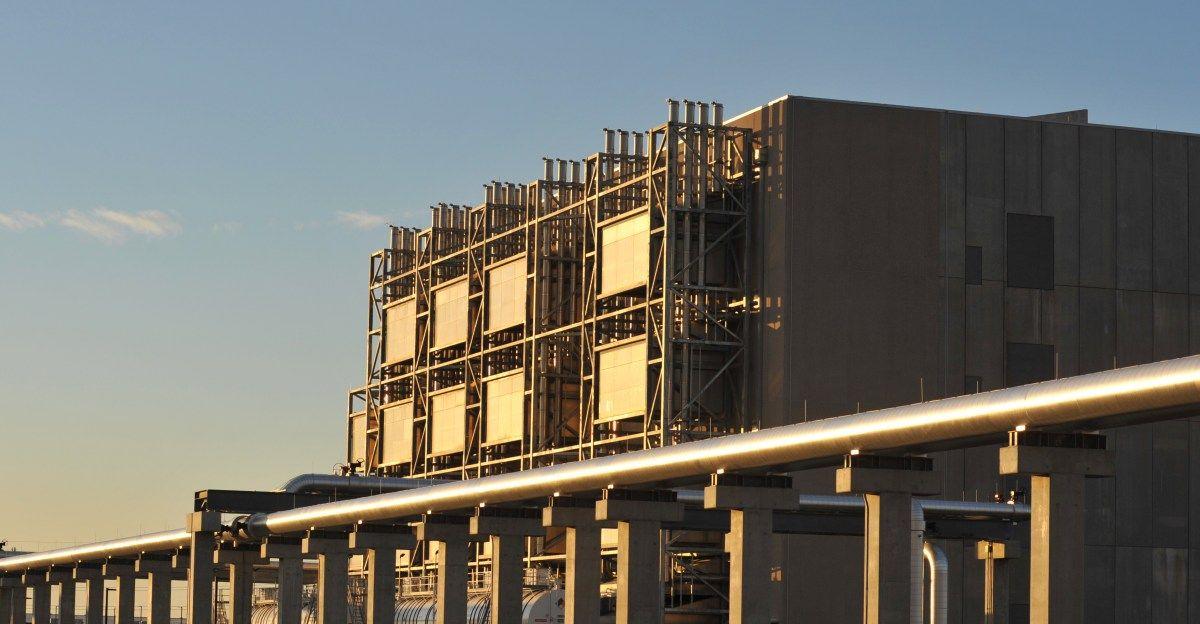Microsoft's Data Center Expansion Challenges Sustainability Goals Amid AI Boom
2 Sources
2 Sources
[1]
Breakneck data center growth challenges Microsoft's sustainability goals | TechCrunch
Microsoft's new sustainability report, released late last week, shows how a carbon-heavy economy can weigh on a company that wants to be carbon light. Since 2020, its carbon emissions are up 23.4%, mostly a result of breakneck data center buildout to support its growing cloud and AI operations. Buying enough clean electricity is actually the easy part -- it's the facilities themselves that are laden with carbon-intensive materials and products, including steel, concrete, and computer chips. "We reflect the challenges the world must overcome to develop and use greener concrete, steel, fuels, and chips," a Microsoft spokesperson told TechCrunch via email. "These are the biggest drivers of our Scope 3 challenges." Scope 3 emissions are those that are outside a company's direct control, including raw materials, transportation, and purchased goods and services. Emissions in Scope 3 represent nearly all of Microsoft's carbon footprint, just over 97% for fiscal year 2024, which the 2025 sustainability report covers. Microsoft's Scope 3 profile is dominated by capital goods and purchased goods and services, with the two contributing about three-quarters of the company's total carbon emissions. The construction of data centers has been the main driver behind Microsoft's stubborn Scope 3 emissions. The steel used in the buildings comes from a supply chain that relies on blast furnaces heated by fossil fuels, and concrete used in the foundation is the product of a chemical reaction that's both powered by and a producer of carbon dioxide. Some startups are working to decarbonize both steel and cement, and Microsoft is an investor in the space, but it'll be years before those bets will have a significant impact. Carbon emissions are embodied in the computer chips inside the data center, too. Semiconductor lithography is dependent on chemicals that have extremely high global warming potential. For example, hexafluoroethane, which is used to etch features on chips, is a potent greenhouse gas, with 1 ton generating as much warming as 9,200 tons of carbon dioxide. Even in green electricity, which is easier to find, hurdles have popped up as data centers aren't always built near abundant clean energy sources. Because of that, Microsoft has had a difficult time finding nearby sources of zero-carbon electricity, forcing it to rely on purchases elsewhere. "Our electricity consumption has grown faster than the grids where we operate have decarbonized," the spokesperson said. Overall, Microsoft's 2024 emissions were down slightly compared with 2023, suggesting that the company is getting better at building data centers with lower climate impacts. Still, it has a long way to go to meet its 2030 goal of removing more carbon pollution that it generates. By its own forecast, Microsoft will have to cut its emissions by more than half while also significantly ramping up its carbon removal efforts. There are signs that Microsoft is making some headway on both fronts. It has been one of the leading investors in and buyers of solar power in recent months, and its zero-carbon electricity portfolio now stands at 34 gigawatts of capacity. Plus, it has recently signed some very large deals that promise to remove millions of metric tons of carbon. 2030 is just a few years away, however, and the company's push into AI and cloud may be profitable -- but it's made reaching its sustainability goals that much harder.
[2]
Microsoft's clean energy efforts can't keep up with its data growth
Microsoft's sustainability report, released recently, reveals a 23.4% increase in carbon emissions since 2020. Rapid data center expansion to support cloud and AI operations primarily drove this increase, challenging the company's carbon reduction goals. A Microsoft spokesperson stated, "We reflect the challenges the world must overcome to develop and use greener concrete, steel, fuels, and chips." These materials, used in the construction of data centers, contribute significantly to the company's Scope 3 emissions. Scope 3 emissions, representing over 97% of Microsoft's carbon footprint for fiscal year 2024, encompass emissions outside of the company's direct control, including raw materials, transportation, and purchased goods and services. Capital goods and purchased goods and services account for approximately three-quarters of Microsoft's overall carbon emissions. Data center construction is a major contributor to Microsoft's Scope 3 emissions. The steel used in these buildings relies on blast furnaces powered by fossil fuels, and concrete production involves a chemical reaction that generates carbon dioxide. Microsoft is investing in startups focused on decarbonizing steel and cement production. Semiconductor lithography, a process dependent on chemicals with high global warming potential, contributes to carbon emissions embodied in computer chips. Hexafluoroethane, used in chip etching, has a global warming potential 9,200 times greater than carbon dioxide per ton. Microsoft tests Copilot for Gaming in Xbox app for mobile devices Microsoft's spokesperson noted that locating data centers near abundant clean energy sources has presented challenges. This has led to reliance on purchasing zero-carbon electricity from elsewhere. "Our electricity consumption has grown faster than the grids where we operate have decarbonized," the spokesperson said. While Microsoft's overall emissions decreased slightly from 2023 to 2024, the company aims to remove more carbon pollution than it generates by 2030. Achieving this goal requires cutting emissions by more than half and significantly increasing carbon-removal efforts. Microsoft's zero-carbon electricity portfolio currently has 34 gigawatts of capacity, and the company has recently invested in and purchased solar power. Additionally, Microsoft has signed large deals aimed at removing millions of metric tons of carbon.
Share
Share
Copy Link
Microsoft's latest sustainability report reveals a 23.4% increase in carbon emissions since 2020, primarily due to rapid data center expansion for cloud and AI operations, posing challenges to the company's carbon reduction goals.
Microsoft's Sustainability Challenge Amid Rapid Data Center Growth
Microsoft's recently released sustainability report for fiscal year 2024 has revealed a significant increase in the company's carbon emissions, highlighting the challenges faced by tech giants in balancing rapid growth with environmental responsibilities. Since 2020, Microsoft's carbon emissions have surged by 23.4%, primarily due to the extensive expansion of data centers to support its growing cloud and AI operations
1
.The Scope 3 Emissions Dilemma

Source: Dataconomy
The report indicates that Scope 3 emissions, which are outside the company's direct control, represent over 97% of Microsoft's carbon footprint. These emissions encompass raw materials, transportation, and purchased goods and services. A Microsoft spokesperson acknowledged, "We reflect the challenges the world must overcome to develop and use greener concrete, steel, fuels, and chips"
2
.Data Center Construction: A Carbon-Intensive Process
The construction of data centers emerges as the main culprit behind Microsoft's persistent Scope 3 emissions. The steel used in these facilities comes from supply chains reliant on fossil fuel-powered blast furnaces. Additionally, the concrete used in foundations produces carbon dioxide as a byproduct of its chemical reaction. Microsoft is investing in startups working to decarbonize both steel and cement production, but it will take years before these efforts yield significant results
1
.The Hidden Carbon Cost of Computer Chips
Even the computer chips inside data centers contribute to the carbon footprint. Semiconductor lithography depends on chemicals with high global warming potential. For instance, hexafluoroethane, used in chip etching, has a warming effect 9,200 times greater than carbon dioxide per ton
1
.Clean Energy Challenges

Source: TechCrunch
Despite Microsoft's efforts to source clean electricity, the company faces hurdles in aligning data center locations with abundant clean energy sources. As a result, Microsoft often relies on purchasing zero-carbon electricity from distant locations. The spokesperson noted, "Our electricity consumption has grown faster than the grids where we operate have decarbonized"
2
.Related Stories
Progress and Future Goals
Microsoft's emissions for 2024 showed a slight decrease compared to 2023, suggesting improvements in building lower-impact data centers. However, to meet its 2030 goal of removing more carbon pollution than it generates, Microsoft must cut emissions by more than half while significantly increasing carbon removal efforts
1
.The company has made strides in clean energy investment, with its zero-carbon electricity portfolio now at 34 gigawatts of capacity. Microsoft has also signed large deals aimed at removing millions of metric tons of carbon
2
.The AI and Cloud Dilemma
As Microsoft pushes further into AI and cloud services, the company faces a growing tension between profitability and sustainability. While these sectors drive growth, they also intensify the challenge of meeting ambitious environmental goals. With 2030 rapidly approaching, Microsoft's journey towards carbon negativity remains a formidable challenge, underscoring the complex relationship between technological advancement and environmental stewardship in the tech industry
1
.References
Summarized by
Navi
Related Stories
Recent Highlights
1
Google launches Gemini 3 Flash as default AI model, delivering speed with Pro-grade reasoning
Technology

2
OpenAI launches GPT Image 1.5 as AI image generator war with Google intensifies
Technology

3
OpenAI launches ChatGPT app store, opening doors for third-party developers to build AI-powered apps
Technology








